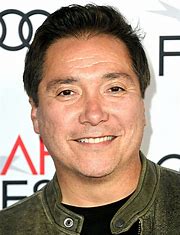Introduction
Chief Justice John Roberts is one of the most prominent figures in American law and politics. Since his appointment to the Supreme Court in 2005, he has played a pivotal role in shaping the direction of the country’s legal system. But beyond his professional accomplishments, there is much to learn about Roberts’ personal life and background. In this blog post, we’ll explore his career path, family life, and some of the controversies that have surrounded him throughout his time on the bench.
Early Life and Career

John Roberts was born in Buffalo, New York in 1955. He grew up in Indiana and attended Harvard University, where he earned his undergraduate degree in 1976. After graduation, Roberts went on to study law at Harvard Law School, where he served as the managing editor of the Harvard Law Review.
After law school, Roberts clerked for Judge Henry Friendly of the U.S. Court of Appeals for the Second Circuit and then for Justice William Rehnquist of the Supreme Court. He later worked in the Reagan administration as a special assistant to Attorney General William French Smith and as an associate counsel to the president. Roberts then went into private practice, where he specialized in appellate litigation.
Appointment to the Supreme Court
In 2003, President George W. Bush nominated Roberts to the U.S. Court of Appeals for the D.C. Circuit, one of the most influential courts in the country. Just two years later, Bush nominated Roberts to replace retiring Justice Sandra Day O’Connor on the Supreme Court.
Roberts’ confirmation process was contentious, with Democrats raising concerns about his conservative views and his lack of a clear record on key issues. However, he was ultimately confirmed by a vote of 78-22, with support from both Republicans and Democrats.
Personal Life and Family
John Roberts is married to Jane Sullivan Roberts, a lawyer and executive at a nonprofit organization. The couple has two children, a son and a daughter.
One notable aspect of Roberts’ personal life is his struggle with vision problems. He has been diagnosed with both nearsightedness and astigmatism, and he famously suffered a seizure in 2007 while at his vacation home in Maine. Roberts has since recovered and has not experienced any further health problems related to the incident.
Controversies and Criticisms
As with any high-profile public figure, Chief Justice John Roberts has faced his fair share of controversies and criticisms. Some of the most notable include:
1. The Affordable Care Act
In 2012, Roberts famously cast the deciding vote in the Supreme Court’s ruling on the Affordable Care Act, also known as Obamacare. His decision to uphold the law was seen as a surprise by many conservatives, who had hoped that the court would strike it down.
2. Voting Rights Act
In 2013, Roberts wrote the majority opinion in a case that struck down a key provision of the Voting Rights Act, arguing that it was no longer necessary to protect minority voters in certain states. The decision was widely criticized by civil rights groups and Democrats, who argued that it would make it easier for states to enact discriminatory voting laws.
3. Immigration
In 2018, Roberts sided with the court’s liberal justices in a ruling that blocked the Trump administration’s attempt to end the Deferred Action for Childhood Arrivals (DACA) program. The decision was seen as a rebuke to the Trump administration’s hardline immigration policies.
Despite these controversies, Chief Justice John Roberts remains one of the most influential and respected figures in American law. His decisions and opinions will continue to shape the direction of the country’s legal system for years to come.
FAQ
Who is Chief Justice John Roberts?
John G. Roberts Jr. is the current Chief Justice of the United States, serving since 2005.
What did John Roberts do before becoming Chief Justice?
Before becoming Chief Justice, John Roberts was a lawyer and judge. He served as a law clerk for Judge Henry Friendly and later for Supreme Court Justice William Rehnquist. He also worked in private practice and served as a government lawyer, including as the principal deputy solicitor general of the United States.
What are some notable cases that John Roberts has presided over as Chief Justice?
Some notable cases that John Roberts has presided over as Chief Justice include the Affordable Care Act case (National Federation of Independent Business v. Sebelius), the same-sex marriage case (Obergefell v. Hodges), and the Citizens United case (Citizens United v. Federal Election Commission).
What is John Roberts’ approach to interpreting the Constitution?
John Roberts is known for his conservative approach to interpreting the Constitution, which emphasizes the text and original meaning of the Constitution. He has also emphasized the importance of judicial restraint and avoiding judicial activism.
What is John Roberts’ personal life like?
John Roberts is married to Jane Sullivan Roberts, and they have two adopted children. He is known for being private about his personal life and rarely gives interviews or speaks publicly about his family.



